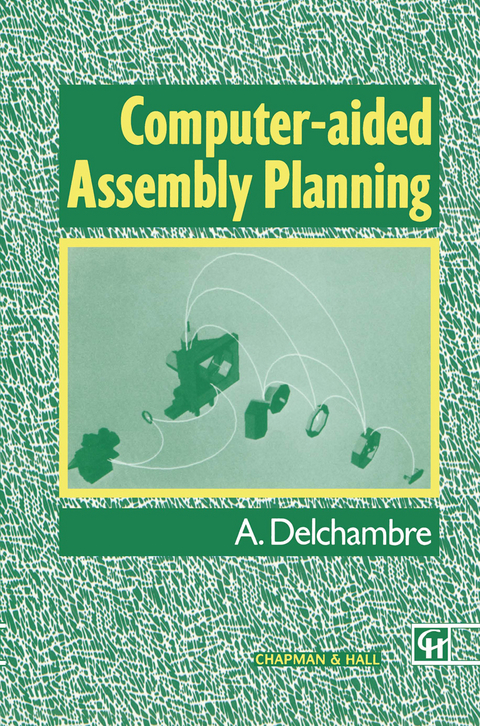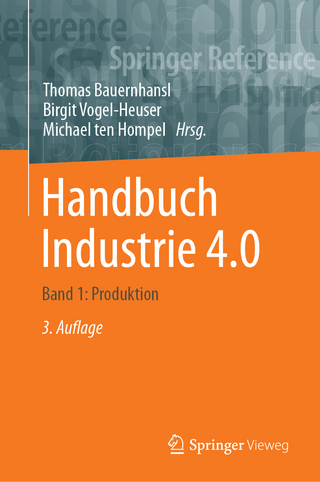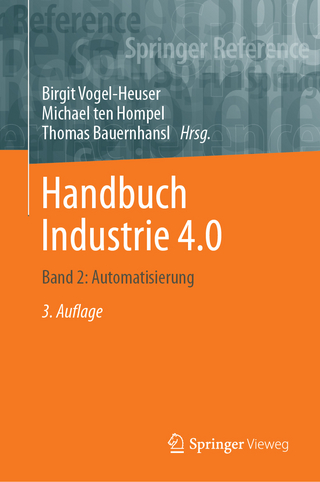
Computer-aided Assembly Planning
Springer (Verlag)
978-94-010-5025-8 (ISBN)
The assembly sector is one of the least automated in the manufacturing industry. Automation is essential if industrial companies are to be competitive in the future. In assembly, an integrated and flexible approach is needed because 75% of the applications are produced in small and medium batches. The methodologies developed in this book deal with the integration of the assembly process from the initial design of the product to its production. In such an integrated system, assembly planning is one of the most important features. A well-chosen assembly plan will reduce both the number of tool changes and the fixtures within the assembly cell. It will prevent the handling of unstable subassemblies, simplify the design of the robot grippers and reduce production costs. An automatic generator of assembly sequences can be an efficient aid to the designer. Whenever he or she modifies features of the product, the influence of these modifications can immediately be checked on the sequences. For small batch production, the automatic generation of assembly sequences is faster, more reliable and more cost-effective than manual generation. By using this latter method interesting sequences could be missed because of the combinatorial explosion of solutions. The main subjects treated in this book are as follows. 1. Presentation and classification of existing systems of automatic generation of assembly sequences. Automatic assembly planning is, indeed, a very recent research area and, in my experience, no systematic study has been carried out up to now.
1. Flexible assembly.- 1.1 Introduction.- 1.2 Economic importance of assembly.- 1.3 Definition of assembly.- 1.4 Historical survey.- 1.5 Definition of an assembly cell.- 1.6 Robotized flexible assembly cell components.- 1.7 Current research areas.- 1.8 Integrated control of a flexible assembly cell.- 1.9 Specifications of an automatic assembly plan generator.- 1.10 Typical case studies.- 2. State of the art.- 2.1 Introduction.- 2.2 Assembly modelling.- 2.3 Solution strategies.- 2.4 Description formalisms of assembly sequences.- 2.5 Conclusions.- 3. Assembly modelling.- 3.1 Introduction.- 3.2 Geometrical information.- 3.3 Component information.- 3.4 Final assembly information.- 3.5 Topological information.- 3.6 Technological information.- 3.7 Processing oblique assembly directions.- 3.8 Processing complex assembly directions.- 3.9 Conclusions.- 4. Basic principles of the proposed approach.- 4.1 Introduction.- 4.2 Classification of assembly sequences.- 4.3 General methodology.- 4.4 Conclusions.- 5. Automatic and systematic generation of precedence constraints.- 5.1 Introduction.- 5.2 Realizability conditions of an assembly operation.- 5.3 Precedence operators.- 5.4 Sources of precedence constraints.- 5.5 User-friendliness of the precedence constraint formalism.- 5.6 Automatic and systematic generation of precedence constraints.- 5.7 Conclusions.- 6. Generation and choice of assembly plans.- 6.1 Introduction.- 6.2 Precedence constraint-based reduction of the number of assembly sequences.- 6.3 Choice criteria.- 6.4 Displaying selected assembly plans.- 6.5 Conclusions.- 7. Conclusions.- 7.1 Summary of the major contributions of this book.- 7.2 Guidelines for future developments.- Appendix A Generation of assembly sequences and trees.- Appendix B GRAFCET syntax.- References.
| Zusatzinfo | IX, 276 p. |
|---|---|
| Verlagsort | Dordrecht |
| Sprache | englisch |
| Maße | 155 x 235 mm |
| Themenwelt | Sachbuch/Ratgeber ► Natur / Technik ► Garten |
| Informatik ► Weitere Themen ► CAD-Programme | |
| Naturwissenschaften ► Chemie ► Technische Chemie | |
| Technik ► Maschinenbau | |
| ISBN-10 | 94-010-5025-2 / 9401050252 |
| ISBN-13 | 978-94-010-5025-8 / 9789401050258 |
| Zustand | Neuware |
| Informationen gemäß Produktsicherheitsverordnung (GPSR) | |
| Haben Sie eine Frage zum Produkt? |
aus dem Bereich


